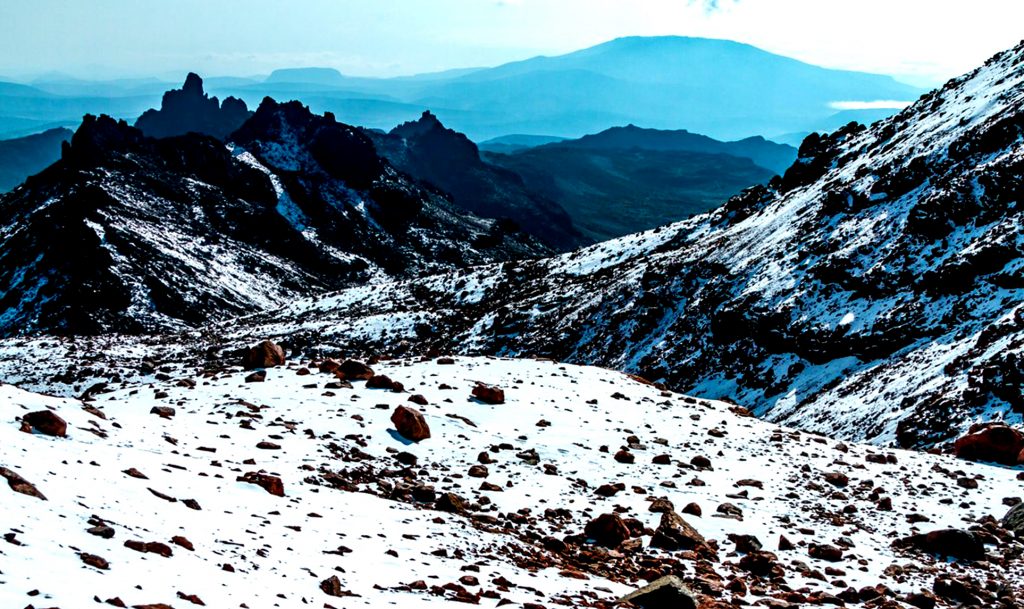Mount Kenya is a breathtaking spectacle that’s the predominate landmark of the central part of Kenya and has inspired peoples life’s in many strange ways.
It is perhaps unsurprising that due to it majestic beauty the Kikuyu people who reside on its lower slopes believed that this was their God’s abode. The Mountain’s original name was “Kirinyaga” from a word meaning a place with Ostrich. Legend has it that the original name was derived from the local peoples comparison of the patched peaks resemblance with the black and white plumage of a male Ostrich.
For the Kikuyu the Mountain was and remains to some a sacred place where “Ngai” or “Mwene Nyaga” the God of the Kikuyu spent his daytime on the top keeping an eye on the people before retiring to sleep in the neighbouring Aberdares Range (locally called Nyandarua). As a religious belief, they faced the mountain when praying and offering sacrifice to their God. In the days before the explorers came calling, visits to the mountain were only made as a pilgrimage to offer special sacrifice to God, otherwise it was a taboo.
Since being discovered by the early explorers, trekking in Mount Kenya has attracted many adventure travellers. The most hilarious attempt was that made in 1943 by Felice Benuzzi, an Italian prisoner of the 2nd world war held at Nanyuki Prison at the base of the mountain, with two companions, they escaped and attempted to scale the summit with just a map inscribed on a tin and few handmade climbing tools. Unfortunately they didn’t make to the top due to hunger. Today the mountain attracts over 30,000 enthusiasts a year. Point Lenana (4,985 m), the so-called trekkers peak, can be reached by any reasonably fit and suitably prepared person. The summit has the twin peaks of Batian (5,199 m) and Nelion (5,188 m), and is accessible to only those with technical mountaineering and rock climbing experience. This mountain is not an easy one to conquer and each year not more than 100 climbers make it to the twin summit peaks. Mount Kenya is infact more technically challenging than the higher Kilimanjaro (5,894 m). But those who make it to the top experience some of Africa’s finest rock and ice climbing challenges.
The mountain is made up of three main zones: the rocky peak region, the afro-alpine moorland with its scattering of giant vegetation, and the extensive lower slopes covered in mountain forest and bamboo. The astonishing ecological diversity is one of the attractions of this giant. The ecological processes that have brought about the afro-alpine flora in particular intrigue scientists. There are 81 species of plants here that are found nowhere else in the world.
In the lower forest zone, there is plenty of wildlife including buffalo, elephant, sykes monkey and bushbuck. The animals are however generally difficult to see. Further up, the animals are even scarcer though hyena, leopard, buffalo and civet cats have been sighted. The only animal you are likely to see in the upper alpine zones is the rock hyrax. Though it is the size of a domestic cat, it has some powerful relatives in the animal kingdom as it counts the elephant as it’s biological kin.


Mountain Rock is the best for all your Mountain Climbing needs